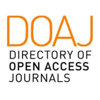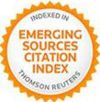Survey and 3D modelling of underground heritage spaces with complex geometry: surface optimisation for association with HBIM methodology 
Abstract
The historic centres of many cities have interior underground cavities or empty spaces dating from different periods. This paper establishes guidelines for systematising and simplifying the collection of data from underground heritage spaces, with the ultimate aim of facilitating the management of the information obtained and encouraging the conservation and public appreciation of this type of heritage hidden beneath the surface of our cities. The case study selected is a Roman cistern belonging to the network of underground heritage structures in Carmona. The photogrammetric survey conducted presented an additional complexity due to the small size of the space and its underground location. As the next step in the research, a 3D model is created. Lastly, a set of optimised strategies specific is proposed to the unique nature of this type of heritage.
Keywords
Full Text:
PDFDOI: http://dx.doi.org/10.2423/i22394303v12n1p177
References
Alessandri, L., Baiocchi, V., Del Pizzo, S., Di Ciaccio, F., Onori, M., Rolfo, M. F., & Troisi, S. (2020). A flexible and swift approach for 3D image–based survey in a cave. Applied Geomatics. https://doi.org/10.1007/s12518-020-00309-4
Amores Carredano, F. (1982). Carta arqueológica de los Alcores (Sevilla). Diputación Provincial de Sevilla.
Angelini, M. G., Baiocchi, V., Costantino, D., & Garzia, F. (2017). Scan to BIM for 3D reconstruction of the papal basilica of saint Francis in Assisi In Italy. International Archives of the Photogrammetry, Remote Sensing and Spatial Information Sciences - ISPRS Archives, 42(5W1), 47–54. https://doi.org/10.5194/isprs-Archives-XLII-5-W1-47-2017
Anglada Curado, R., Belén Deamos, M., Conlin Hayes, E., & Jiménez Hernández, A. (2001). El uso del agua en Carmona. Las termas de la calle Pozo Nuevo. In Carmona Romana (pp. 209–232).
Baiocchi, V., Barbarella, M., Del Pizzo, S., Giannone, F., Troisi, S., Piccaro, C., & Marcantonio, D. (2017). Augusto’s sundial: Image-based modeling for reverse engeneering purposes. International Archives of the Photogrammetry, Remote Sensing and Spatial Information Sciences - ISPRS Archives, 42(2W3), 63–69. https://doi.org/10.5194/isprs-archives-XLII-2-W3-63-2017
Belén, M., Anglada, R., Conlin, E., & Jiménez, A. (1996). Excavaciones en Carmona (Sevilla) Las termas de la calle Pozo Nuevo. In Anuario arqueológico de Andalucía 1996 (Junta de Andalucía, pp. 630–639).
Benavides López, J. A., Martín Civantos, J. M., & Rouco Collazo, J. (2020). Levantamiento arquitectónico y análisis arqueológico del castillo de Píñar como punto de partida para su conservación. Virtual Archaeology Review, 11(22), 95. https://doi.org/10.4995/var.2020.12397
Brumana, R., Dellatorre, S., Oreni, D., Previtali, M., Cantini, L., Barazzetti, L., Franchi, A., Banfi, F., Della Torre, S., Oreni, D., Previtali, M., Cantini, L., Barazzetti, L., Franchi, A., & Banfi, F. (2017). HBIM challenge among the paradigm of complexity, tools and preservation: The basilica Di collemaggio 8 years after the earthquake (L’aquila). International Archives of the Photogrammetry, Remote Sensing and Spatial Information Sciences - ISPRS Archives, XLII(September), 97–104. https://doi.org/10.5194/isprs-archives-XLII-2-W5-97-2017
Bruno, N., & Roncella, R. (2018). A restoration oriented HBIM system for cultural heritage documentation: The case study of parma cathedral. International Archives of the Photogrammetry, Remote Sensing and Spatial Information Sciences - ISPRS Archives. https://doi.org/10.5194/isprs-archives-XLII-2-171-2018
Burens, A., Grussenmeyer, P., Carozza, L., Lévêque, F., Guillemin, S., & Mathé, V. (2014). Benefits of an Accurate 3D Documentation in Understanding the Status of the Bronze Age Heritage Cave “Les Fraux” (France). International Journal of Heritage in the Digital Era, 3(1). https://doi.org/10.1260/2047-4970.3.1.179
Calvano, M., Martinelli, L., Calcerano, F., & Gigliarelli, E. (2022). Parametric Processes for the Implementation of HBIM — Visual Programming Language for the Digitisation of the Index of Masonry Quality. International Journal of Geo-Information, 11(93). https://doi.org/https://doi.org/10.3390/ijgi11020093
Castellano Román, M., & Pinto Puerto, F. (2019). Dimensions and Levels of Knowledge in Heritage Building Information Modelling, HBIM: The model of the Charterhouse of Jerez (Cádiz, Spain). Digital Applications in Archaeology and Cultural Heritage, 14, e00110. https://doi.org/10.1016/J.DAACH.2019.E00110
Chikatsu, H., & Takahashi, Y. (2009). Comparative evaluation of consumer grade cameras and mobile phone cameras for close range photogrammetry. In F. Remondino, M. R. Shortis, & S. F. El-Hakim (Eds.), Videometrics, Range Imaging, and Applications X (Vol. 7447, p. 74470H). SPIE. https://doi.org/10.1117/12.825746
Clini, P., Nespeca, R., Angeloni, R., & Mammoli, R. (2019). THE INTEGRATED SURVEY of NARROW SPACES and UNDERGROUND ARCHITECTURE: The CASE STUDY of CAMPANA CAVES BAS-RELIEFS. ISPRS Annals of the Photogrammetry, Remote Sensing and Spatial Information Sciences, 42(2/W9). https://doi.org/10.5194/isprs-archives-XLII-2-W9-277-2019
Conlin Hayes, E. (2001). El abastecimiento agua en la Carmona romana. In Carmona Romana (pp. 203–217).
Fernández Casado, C. (1977). Los depósitos de agua de las conducciones romanas. Revista de Obras Públicas, 3145, 379–398.
Galera-Rodríguez, A., Pinto-Puerto, F., & Algarín-Comino, M. (2022). From Historical Representation to Spatial Data Infrastructure. Contextualisation of the Underground Heritage Spaces in the City of Carmona (Seville). 77–85. https://doi.org/10.1007/978-3-031-04632-2_9/COVER/
Galli, M., Griffo, M., Inglese, C., & Ismaelli, T. (2019). Vecchi scavi e nuove tecnologie: Primi risultati del progetto basilica iulia. Archeologia e Calcolatori, 30, 229–249.
García-Molina, D. F., González-Merino, R., Rodero-Pérez, J., & Carrasco-Hurtado, B. (2021). Documentación 3D para la conservación del patrimonio histórico: el castillo de Priego de Córdoba. Virtual Archaeology Review, 12(24), 115. https://doi.org/10.4995/var.2021.13671
Guerrero Vega, J. M., & Pizzo, A. (2021). Análisis arquitectónico y aplicación de metodología BIM en el santuario extraurbano de Tusculum. Archaeologia e Calcolatori, 2(32.1), 99–116. https://doi.org/10.19282/ac.32.1.2021.06
Jiménez Martín, A., & Pinto Puerto, F. (2003). Levantamiento y análisis de edificios: tradición y futuro. Universidad de Sevilla, Secretariado de Publicaciones.
Moreno Gallo, I. (2007). El arte romano del abastecimiento de aguas. Cimbra: Revista Del Colegio de Ingenieros Técnicos de Obras Públicas, 374, 14–33.
Murphy, M., Corns, A., Cahill, J., Eliashvili, K., Chenau, A., Pybus, C., Shaw, R., Devlin, G., Deevy, A., & Truong-Hong, L. (2017). Developing historic building information modelling guidelines and procedures for architectural heritage in Ireland. International Archives of the Photogrammetry, Remote Sensing and Spatial Information Sciences - ISPRS Archives. https://doi.org/10.5194/isprs-archives-XLII-2-W5-539-2017
Murphy, M., Mcgovern, E., & Pavia, S. (2009). Historic building information modelling (HBIM). Structural Survey, 27(4), 311–327. https://doi.org/10.1108/02630800910985108
Nocerino, E., Menna, F., & Remondino, F. (2014). Accuracy of typical photogrammetric networks in cultural heritage 3D modeling projects. International Archives of the Photogrammetry, Remote Sensing and Spatial Information Sciences - ISPRS Archives, 40(5), 465–472. https://doi.org/10.5194/isprsarchives-XL-5-465-2014
Orche Amaré, P., Millán Naranjo, J., & Román Rodríguez, J. M. (2018). Las minas de agua de los alcores sevillanos: unas monumentales obras hidráulicas subterráneas de época romana que empiezan a salir a la luz. In Junta de Andalucía & Fundación Patrimonio Industrial de Andalucía (Eds.), II Congreso Internacional de Patrimonio Industrial y de la Obra Pública Patrimonio Industrial: pasado, presente y futuro (pp. 378–394). Francisco Javier Sánchez Jiménez (coord.).
Pocobelli, D. P., Boehm, J., Bryan, P., Still, J., & Grau-Bové, J. (2018). BIM for heritage science: a review. Heritage Science, 6, 30. https://doi.org/10.1186/s40494-018-0191-4
Porras-Amores, C., Mazarrón, F. R., Cañas, I., & Villoria Sáez, P. (2019). Terrestial laser scanning digitalization in underground constructions. Journal of Cultural Heritage, 38. https://doi.org/10.1016/j.culher.2019.01.007
Rodríguez Gonzálvez, P., Nocerino, E., Menna, F., Minto, S., & Remondino, F. (2015). 3D Surveying and modeling of underground passages in wwi fortifications. International Archives of the Photogrammetry, Remote Sensing and Spatial Information Sciences - ISPRS Archives, 40(5W4). https://doi.org/10.5194/isprsarchives-XL-5-W4-17-2015
Rua, H., & Gil, A. (2014). Automation in heritage-Parametric and associative design strategies to model inaccessible monuments: The case-study of eighteenth-century Lisbon Águas Livres Aqueduct. Digital Applications in Archaeology and Cultural Heritage, 1(3–4), 82–91. https://doi.org/10.1016/j.daach.2014.06.002
Sánchez López E, & Martínez Jiménez J. (2016). (PDF) Los acueductos en Hispania: construcción y abandono. https://doi.org/https://doi.org/10.17863/CAM.8797
Valls, A., García, F., Ramírez, M., & Benlloch, J. (2015). Understanding subterranean grain storage heritage in the Mediterranean region: The Valencian silos (Spain). Tunnelling and Underground Space Technology. https://doi.org/10.1016/j.tust.2015.07.003
Volk, R., Stengel, J., & Schultmann, F. (2014). Building Information Modeling (BIM) for existing buildings - Literature review and future needs. In Automation in Construction (Vol. 38). https://doi.org/10.1016/j.autcon.2013.10.023
Article Metrics
Metrics powered by PLOS ALM
Refbacks
- There are currently no refbacks.
Copyright (c) 2022 Andrés Galera Rodríguez, Roque Angulo Fornos, Mario Algarín Comino

This work is licensed under a Creative Commons Attribution-NonCommercial-NoDerivatives 4.0 International License.
SCIRES-IT, e-ISSN 2239-4303
Journal founded by Virginia Valzano





